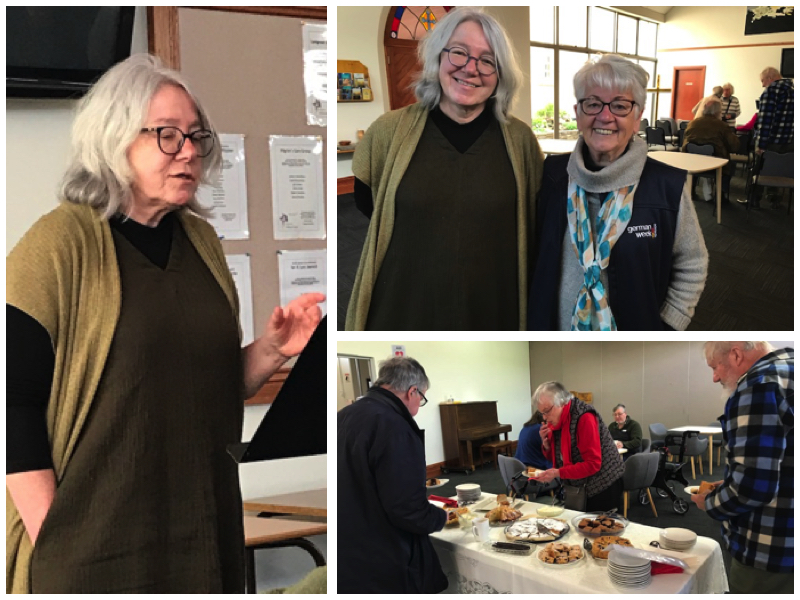In 1933 the German cruiser Köln came to Australia.
That visit was the subject of Christine Winter’s talk at the last meeting of the German speaking group Kaffee und Kuchen. Christine Winter is an Associate Professor in the School of Humanities at Flinders University.

Ostensibly the purpose of the year long voyage was the training of the 70 naval cadets aboard, but with the Köln‘s berthing at ports around the world its aim was to reassure other nations that Germany was a peaceful, friendly nation, and on the whole the ship’s diplomatic commander Otto Schniewind achieved that aim.
The Köln left Germany in December, 1932 and arrived in Fremantle three months later. As part of the festivities the sailors were given a wallaby to be their ship’s mascot.
The welcome to South Australia was rapturous. Captain Schniewind was welcomed at Government House, and a dinner was held at the South Australian Hotel for the captain and his officers. Captain Schniewind apologised that he could not express his gratitude in English, but said that the reception his crew had received was like a homecoming, and he congratulated those citizens of German descent who had made such a contribution to South Australian life and prosperity. The State Member for Barossa, who was chairman of the function, Dr Herbert Basedow, responded to the toasts: “Captain Schniewind has said that although he is in charge of a war vessel he has come to Australia with a message of friendship.”
Further functions were held in Hahndorf and Tanunda. In Hahndorf local pastors Blaess and Braun welcomed in German the ship’s second in command Captain Bruch and his men and joined them in a parade down the main street to the oval, where afternoon tea was served, while the town band and the ship’s band accompanied the festivities with their music.
Shortly after the start of the Köln‘s voyage, on 30 January, 1933, Adolf Hitler came to power. The Köln left Fremantle, its first stop in Australia, flying the black-red-gold horizontal tricolour. It arrived at Outer Harbor flying the black-white-red imperial tricolour, demanded by Hitler, the flag of Germany before its defeat in World War I, a sign that Hitler intended to take back the land it had lost. World War II was six years away, but it was a declaraton of intent.
Another sign was in the music the ship’s band played. It may have entertained the people on the Hahndorf oval with folk tunes, but prominent was one of Hitler’s favourites: Die Wacht am Rhein (The Watch on the Rhine), a call of all Germans to arms.
And while the local postmaster at Hahndorf welcomed the the Köln‘s officers and crew on behalf of the Returned Soldier’s League, in Sydney a couple of weeks later the RSL refused to take part in the festivities.
The next Kaffee und Kuchen meeting will be held at the Langmeil Centre, 7 Maria Street, Tanunda on Monday, 26 August, starting at 1 pm.
